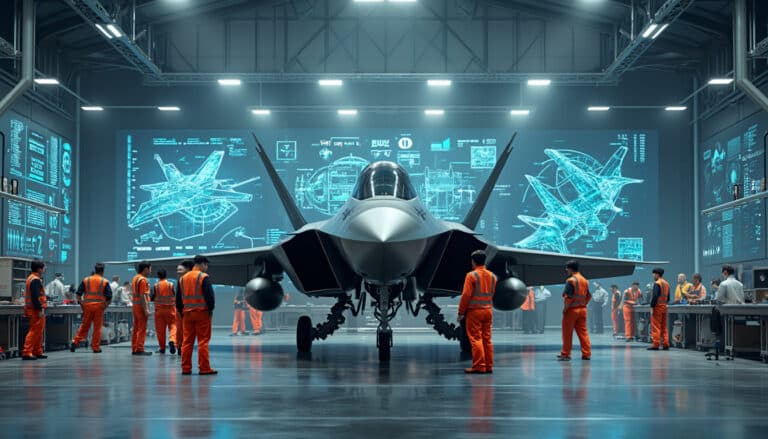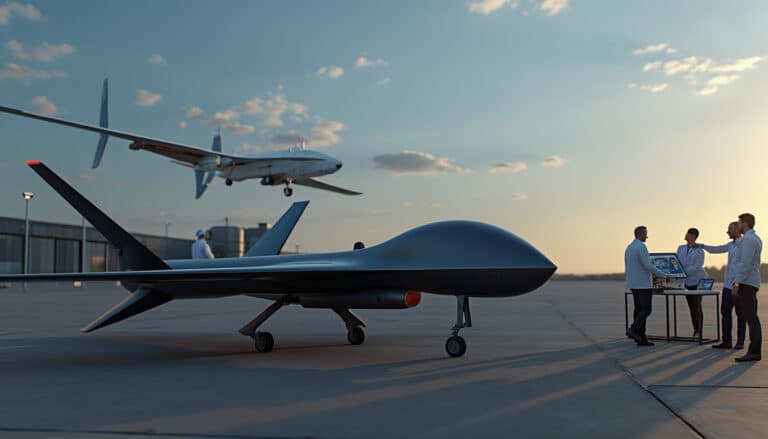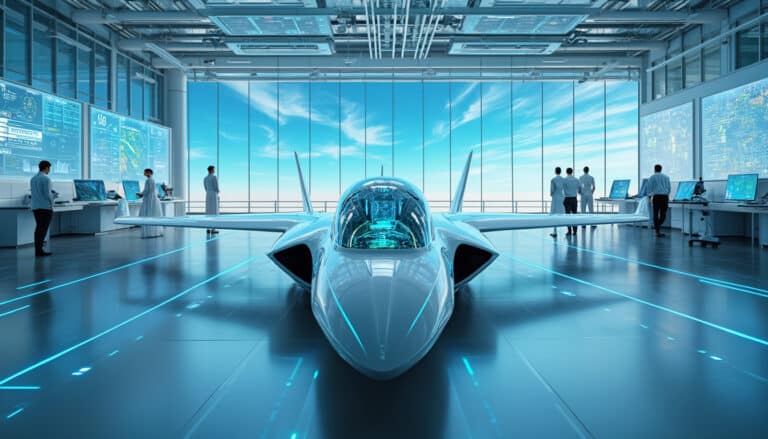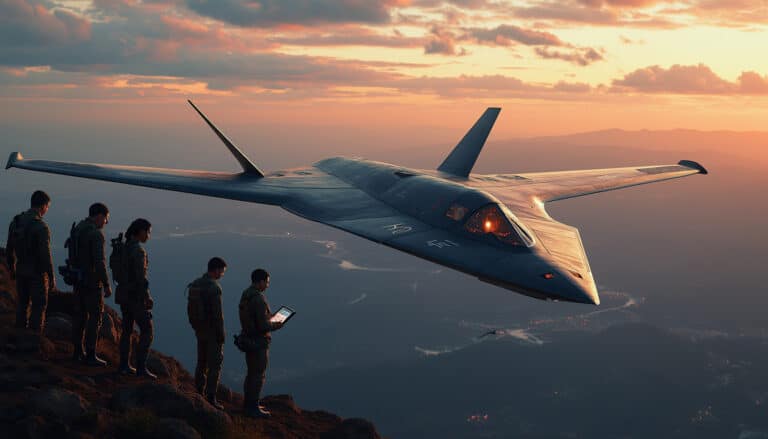Advanced aerodynamics is emerging as an essential pillar in the transformation of the transportation systems of the future. By exploiting the principles of air flow and the interactions between vehicles and their environment, this discipline helps optimize efficiency, reduce energy consumption and improve safety in transport. From land vehicles to aircraft, innovations in aerodynamics are paving the way for higher-performance designs that meet growing demands for durability and speed. Thus, understanding how these advances are redefining the contours of modern transport is crucial to anticipating more responsible and efficient mobility.
Table des matières
ToggleThe importance of aerodynamics in modern transportation
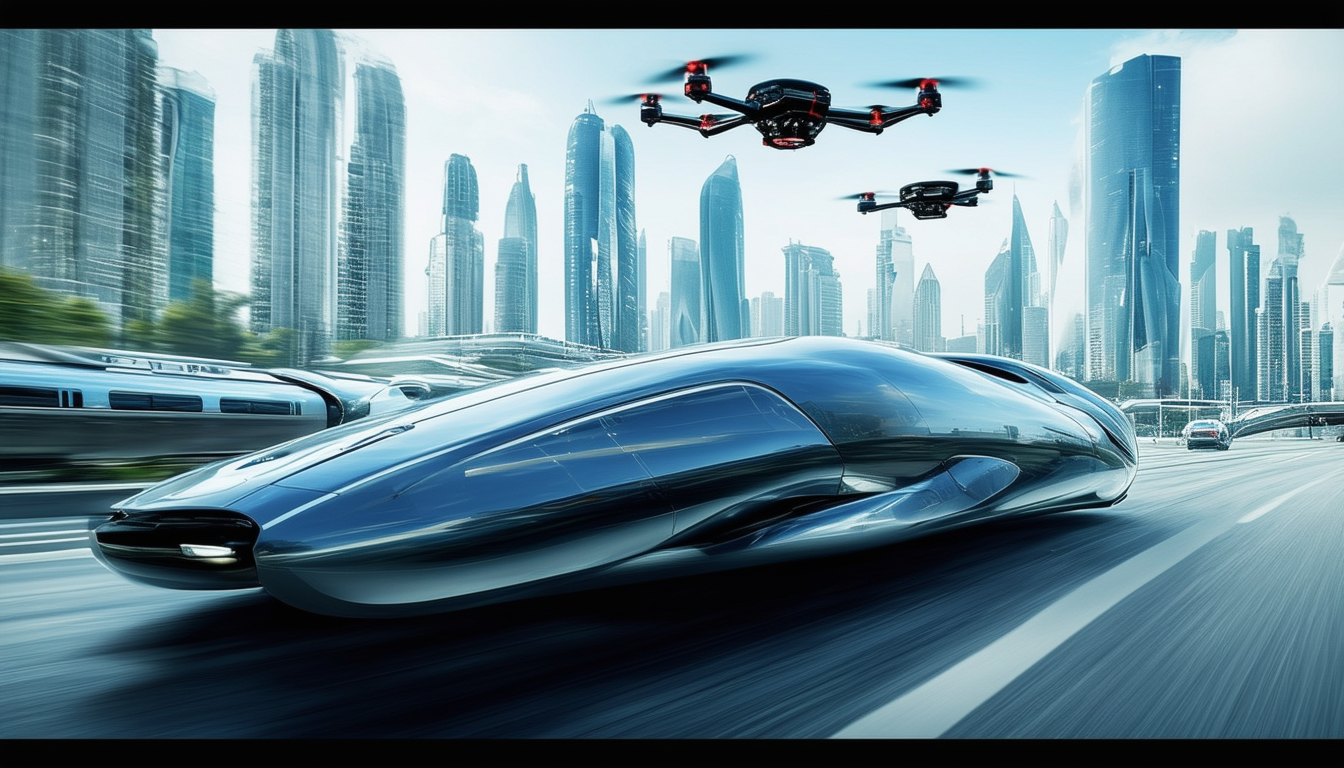
Aerodynamics plays a crucial role in the development of modern transportation technologies. It optimizes the shape and structure of vehicles, in order to minimize air resistance and improve energy efficiency. A well-considered aerodynamic design can significantly reduce fuel consumption, which is essential in a context where the environment and sustainability are at the heart of concerns.
Advances in aerodynamics not only affect airplanes, but also impact several other modes of transportation:
- Automobiles : More aerodynamic shapes help reduce drag, improving performance and fuel economy.
- Trains : The aerodynamic optimization of high-speed trains makes it possible to increase their efficiency and safety.
- Boats : The aerodynamic design of the hulls reduces water resistance, increasing speed and maneuverability.
In addition to efficiency improvements, advanced aerodynamics also promote technological innovation. Solutions such as lightweight composite materials and active control systems enable the creation of even more optimized designs, incorporating features such asautopilot and connectivity. These technologies pave the way for multimodal, interconnected and intelligent transport systems.
The development of electric aviation and drones is also strongly influenced by aerodynamic principles. With increased attention to acoustic saturation and sustainability, it is crucial to explore shapes that reduce noise while maintaining optimal performance. Additionally, integrating AI into aerodynamic design allows millions of configurations to be simulated and analyzed quickly.
Future transport projects, whether land, air or sea, must therefore take into account the principles of advanced aerodynamics to achieve their performance, safety and sustainability objectives. This discipline is now an essential vector for anyone wishing to innovate in the transport sector.
Basic principles of aerodynamics
Aerodynamics plays a crucial role in the development of modern transportation, influencing not only the performance, but also the safety and fuel efficiency of vehicles. Innovations in this area are redefining the standards of transportation, from planes and cars to drones and bicycles. With a better understanding of aerodynamic principles, designers can create vehicles that encounter less air resistance, enabling a significant reduction in fuel consumption and greenhouse gas emissions.
THE basic principles of aerodynamics are based on several fundamental concepts:
- Air resistance : The force that opposes the movement of an object through air. Reducing resistance is key to improving energy efficiency.
- Aerodynamic profile : The shape of a vehicle that influences its interaction with air. Optimized shapes help minimize disruption and improve overall performance.
- Lift development : Essential for aircraft, this involves creating a force that helps lift a vehicle into the air. The wings are designed to maximize this force while minimizing drag.
- Turbulent and laminar airflow : Understanding these flows is necessary to design vehicles that maintain smooth airflow, which can reduce resistance.
By integrating these principles, the industry can design more efficient and environmentally friendly vehicles. Continued research in the field of advanced aerodynamics is paving the way for innovations that will transform the transportation landscape, responding to growing challenges such as urban congestion and climate change.
The importance of aerodynamics cannot be underestimated. It not only improves vehicle performance, but also ensures enhanced security. In a world increasingly concerned with ecological issues, advanced aerodynamics are a key factor for a sustainable future of transportation.
Impact on vehicle energy efficiency
In the world of modern transportation, theaerodynamic plays a crucial role in improving vehicle performance. Through advanced designs, aerodynamics help reduce the air resistance, which results in optimized energy consumption. Vehicles, whether land, air or sea, benefit directly from the application of aerodynamic principles.
Recent technological advances, such as the use of digital simulations and wind tunnels, have made it possible to test and optimize vehicle shapes. This results in smoother, more efficient designs. The application of these principles extends to:
- Automobiles, which show better fuel consumption.
- Aircraft, particularly commercial aircraft, which double their efficiency by reducing streak.
- High-speed trains, whose silhouette is streamlined to minimize resistance.
Each percentage gained in energy efficiency can have a significant impact on operating costs and the associated carbon footprint, meeting the growing demand for more sustainable transport solutions. Continued innovation in aerodynamics promises to transform the way vehicles interact with their environment, paving the way for even more impressive advances in the years to come.
Implementing advanced aerodynamic techniques is not just about optimizing performance. This also includes safety, with vehicles able to better withstand extreme weather conditions thanks to robust and aerodynamic designs. This integrated approach ensures both a reduction in costs and an improvement in passenger safety.
In short, advanced aerodynamics is a determining factor in the transportation revolution of the future, providing answers to current energy and security challenges.
Innovations and emerging technologies
Developments inadvanced aerodynamics are radically transforming the transport sector. Thanks to exceptional research, new technologies are emerging, redefining vehicle performance and efficiency standards. These advances reduce drag, optimize fuel consumption, and improve travel safety.
Among the significant innovations, we find:
- Biomimetic designs inspired by animal shapes to improve airflow.
- The use of lightweight composite materials that promote aerodynamic performance while reducing vehicle weight.
- Active control systems to adjust surface configuration in real time, allowing constant adaptation to flight or driving conditions.
These technologies have a direct impact on several types of transport:
- Aviation : New generation aircraft, with an optimized design, offer substantial reductions in kerosene consumption.
- Automotive : Electric cars benefit from improved aerodynamics, increasing their range and reducing their environmental footprint.
- Urban transport : Drones and autonomous vehicles integrate aerodynamic principles to maximize their efficiency in complex urban environments.
The issue of the safety is also essential. Aerodynamic advances contribute to safer designs, minimizing risks in the event of an accident. The regular adoption of new norms and standards ensures the integration of these technologies into an appropriate regulatory framework.
Ultimately, advanced aerodynamics is not just about performance; it represents a path towards a future of sustainable transportation, offering innovative solutions capable of meeting the challenges of tomorrow. The rise of these revolutionary technologies positions the transportation industry at the forefront of innovation, with diverse applications ranging from aviation to urban mobility, and contributes to the continued improvement of global transportation systems.
Advanced materials and optimized design
The progress in advanced aerodynamics are redefining the transport landscape, both air and land. Innovations in this area make it possible to optimize vehicle performance while reducing their energy consumption. Thus, each part of the vehicle is carefully studied to maximize aerodynamic efficiency.
To support this progress, the integration of advanced materials and the implementation of a optimized design are essential. These materials, often lighter and more resistant than current standards, make it possible to reduce the weight of vehicles while maintaining high levels of safety.
- Carbon fibers : used for their lightness and strength, they make it possible to build efficient aerodynamic structures.
- Innovative composites : promote the integration of functionalities while reducing losses in terms of weight.
- Shape memory materials : adapt the shape of the surfaces according to flight or traffic conditions, thus optimizing aerodynamic performance at different speeds.
At the same time, a computer aided design (CAD) and fluid simulations assisted by advanced software allow engineers to test, in real time, the aerodynamics of their models. This results in more efficient prototypes, resulting in finished products that improve overall vehicle performance.
Numerical modeling systems such as computational fluid dynamics (CFD) play a key role in this process, making it possible to analyze the fluidic behavior around objects. These innovations can significantly reduce aerodynamic drag, leading to lower fuel consumption and reduced greenhouse gas emissions.
The adoption of such processes and materials in the design of transport vehicles of the future is essential to achieve the ambitions of sustainability and energy efficiency. Developments in advanced aerodynamics will continue to shape the future of transportation, paving the way for more revolutionary and environmentally friendly transportation solutions.
Applications in different modes of transport
The rise of innovations in aerodynamics has profound disruptive potential for the transportation sector. Technological advances resulting from research in advanced aerodynamics make it possible to design more efficient systems. effective, reducing not only energy consumption, but also carbon emissions. greenhouse gas.
New techniques, such as the use of modeling software digital and wind tunnel tests, provide a better understanding of air flows around vehicles. This allows for cleaner designs that increase the stability and the performance while improving security.
There are multiple applications of aerodynamic technologies, affecting various modes of transport:
- Aerial: New generation aircraft, equipped with optimized aerodynamic profiles, are experiencing significant gains in fuel consumption. fuel and in reduction of noise pollution.
- Military aeronautics: The integration of drones with advanced aerodynamic characteristics makes it possible to increase their commitment capacity while improving the severability and the maneuverability.
- Automotive: Electric vehicles also benefit from aerodynamic improvements, increasing their range and energy efficiency.
- Rail: High-speed trains use aerodynamic designs to minimize air resistance, thereby increasing their speed and reducing their energy consumption.
At the same time, research initiatives oriented towards bikes and other gentle means of transport are also seeking to integrate aerodynamic principles. The objective is to promote greater mobility sustainable in urban areas, thereby reducing dependence on traditional motorized vehicles.
The synergy between advanced aerodynamics and technological innovation marks a crucial step in the transformation of transport infrastructure. With the emergence of these new technologies, the future of transportation promises to be not only more sustainable, but also more secure And efficient.
















